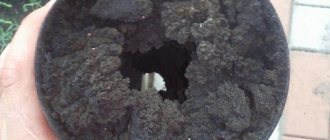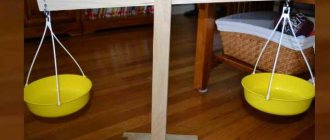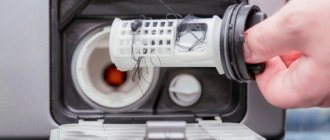Here you will learn:
- Symptoms for urgent column cleaning
- What you can do on your own
- How to remove the casing of a Bosch water heater
- How to remove and clean the igniter
- How to clean and how to rinse the filter
- How to clean a geyser from scale
- How to clean a radiator
- How to remove soot from a heat exchanger
- Prevention
The reasons for contamination of a flow-through water heating device are related to its functions and operating principle:
- Flowing water supply. The column heats the water flowing through its heat exchanger, which brings with it mineral inclusions. As a result, clogging deposits settle on the walls of the heat exchanger and pipes of the device and gradually increase.
- Gas burner burning. In case of incomplete combustion of gas (see reasons below), carbon deposits and soot are formed. The latter clogs the fins of the heat exchanger and the chimney, further impairing the combustion of gas fuel and slowing down the heating of water.
- Low quality tap water. Due to the hardness of tap water, when it is heated, salts are released from the composition, which are deposited in the form of scale inside the pipes and heat exchanger. The thicker the layer of scale, the narrower the lumen of the pipe and the worse it passes water.
In addition to magnesium and calcium salts dissolved in water, it contains mechanical impurities from rusting pipes. They also participate in the gradual growth of the pipe channel in the heat exchanger together with scale.
As for soot, its active formation is facilitated by increased pressure on the burner, weak chimney draft (low height, cracks, lack of thermal insulation, etc.), lack of supply air (PVC windows are sealed, but there is no supply valve).
Soot deposition is also facilitated by the use of forced exhaust in a room with a working water heater (causes a lack of oxygen), dustiness of the room (dust enters the burner, due to which complete combustion of the gas does not occur).
Filters and magnetic traps, fine adjustment of the burner and air draft will slow down the process of column clogging, but will not completely eliminate it
Since scale formation is more intense when water is heated above 60°C, some owners of German water heaters set the burner heating temperature to low. However, as a result of this, the working cavities of the heat exchanger gradually become overgrown with a greenish coating from condensate.
As a result, the removal of flue gases deteriorates, which contributes to the accelerated formation of soot. A heat exchanger clogged with soot heats water very poorly - soot is a good heat insulator.
Symptoms for urgent column cleaning
There are several signs that should prompt the owner to think about immediately cleaning the unit:
- clap when igniting the burner (by the way, a popular “disease with the Bosch WR 10-2B according to user reviews);
- the burner turns off quickly;
- soot spills out from under the casing;
- the water barely heats up at maximum power of the device;
- there is a weak water pressure coming from the tap (although, for example, the Avangard models can work perfectly well with low water pressure).
You can fix the problems like this:
- clean the jets;
- clean the igniter;
- remove soot from the heat exchanger;
- rinse the heat exchanger of the gas water heater to remove any scale that has formed.
Each of the events held has its own characteristics. Cleaning a geyser with your own hands involves initially turning off the water and gas supply.
Symptoms of malfunctions
The following signs indicate that the column is clogged:
- The burner does not light well and a loud bang may be heard;
- The heater starts, but the burner goes out almost immediately;
- Soot is pouring out from under the casing below;
- The unit operates at maximum capacity, but the water barely heats up.
Recommendations on how to clean the heat exchanger of a geyser or igniter will be different, so you need to immediately understand what and where exactly the problem is. So cotton in the chamber indicates that excess gas is accumulating before ignition.
In this case, look for instructions on how to clean the igniter, which is responsible for the timely ignition of fuel. If the flame is very weak and has a pronounced yellow color, the nozzle is clogged. The ignition unit in most models can be easily disconnected from the main burner, and then calmly remove all debris.
The draft and overheating sensors are triggered by the accumulation of excessive amounts of soot. It is concentrated between the fins of the heat exchanger. At the same time, the cross-section of the gas-air path decreases, and operating temperatures increase. In this case, you need a liquid to clean the heat exchanger of the geyser from soot.
If flakes literally fall out from under the decorative apron, you should clean the gas water heater immediately.
If cleaning the gas water heater heat exchanger does not give the required results, check the main burner. Soot can clog its nozzles, and again, proper heating is not produced. The gas column burner and the heat exchanger are closely connected, so it is advisable to carry out preventive maintenance of both units at the same time.
The heat exchanger of the geyser must be cleaned of scale in order to restore the normal flow area. Any deposits on the walls reduce it and negatively affect the functionality of the device.
“Overgrowing” of the internal pipe passages is indicated by a decrease in water pressure at the outlet of the device at normal inlet pressure. The salts in tap water cannot be removed anywhere - and it is they that lead to clogging of the pipe passages. Over time, as a result of their natural deposition, the walls become clogged, and the plaque becomes very thick and durable. In this case, cleaning the geyser heat exchanger using the flushing method helps.
Let's summarize when maintenance needs to be done (and the sooner the better):
- The device quickly goes out during operation or does not turn on at all. First check the gas supply - if there is no problem, make sure there is sufficient water pressure. When the pressure is also stable, test the ignition element. If there is a thick layer of burning and soot, it will not work normally until the contaminants are removed. The solution to the problem is cleaning the burner.
- Constant activation of the thermal protection of the device - in order to prevent the equipment from overheating, it is equipped with a heat sensor. This sensor signals critical temperature increases and warns the owner about equipment malfunctions. When the sensor is triggered too often, it makes sense to clean the pipes and burner.
- Thermal protection is triggered - a sensor in the column is provided to ensure that the equipment does not overheat and, accordingly, does not fail prematurely. It signals an increase in current indicators above critical levels. If the sensor triggers frequently, check the pipes - scale most likely has accumulated there. Since scale has good thermal insulation properties, the device overheats and turns off.
- The productivity of the device has decreased significantly for unknown reasons - for example, the water began to heat up slowly, and the pressure dropped sharply. It is necessary to test the heat exchanger for the presence of scale and remove all deposits from the working parts of the device.
We have figured out the causes and signs of blockages, now let’s see how to clean a gas water heater with your own hands, and what is needed for this.
What you can do on your own
Before starting work, turn off the gas and water supply to the column. Under no circumstances attempt to repair the gas part of the device yourself! This may lead to an emergency.
At home you can clean:
- burner for soot and soot;
- internal parts from dust;
- heat exchanger – from scale;
- water pipes.
And also check:
- condition of the water intake unit;
- tightness of connections;
- serviceability of the traction sensor;
- presence of lubricant.
All operations are carried out in a certain sequence.
Descaling: work order
To carry out such manipulation, you can use both folk remedies and chemical solutions. Having cast your vote in favor of chemistry, you must follow the instructions exactly. If you choose citric acid or vinegar, then the work consists of the following steps:
- the gas water heater is turned off;
- the heat exchanger is disconnected by hand from the remaining elements and removed from the wall, the water is drained from it;
- at the same time connect a hose to the pipe that supplies water to the column to avoid leaks;
- using a bulb, syringe or watering can, the resulting solution is poured into the heat exchanger pipes;
- Now the heat exchanger body is lowered into a deep basin with the same mixture and left in this state for several hours or overnight.
After this, the part must be rinsed well under running water, connected back to the column (optionally, the column of the Ariston FAST R ONM model) and then start the device. Pressurized water will remove all scale, leaving the pipes perfectly clean.
Nuance : It’s easy to check the effectiveness of your work - just look at the color of the water: if it is transparent, then all the scale has come out.
Anyone who dreams of a new device will be interested in reading: Replacing an old gas water heater with a new one: 5 important points
How to remove the casing of a Bosch water heater
The decorative and protective casing of the speaker is easy to remove:
- you need to unfasten the round adjustment knobs by pulling them towards you;
- move the rectangular gas adjustment knob to the body cavity (the “ignition” position). Please note that not every Bosch water heater model has such a handle;
- Using a Phillips screwdriver, unscrew the two self-tapping screws securing the casing to the column frame. They are located at the bottom, on the sides of the device.
All that remains is to carefully push the lower part of the water heater casing towards you with both hands. Then lift up, remove completely and set aside. Now you can visually assess the contamination of the device and determine the scale of cleaning work.
My name is Mikhail Valerianovich Strokin.
I recently had a problem that you helped me solve. I lived in the country all summer, and when I returned to the city apartment, I discovered that the ELECTROLUX speaker did not turn on. She had been resting all summer, and now she refused to turn on. I called and called the experts. So they took it all apart for me, cleaned it and it started working again.
Sources:
https://remont-system.ru/kotly/kak-pochistit-gazovuyu-kolonku-Bosch-svoimi-rukami https://sovet-ingenera.com/otoplenie/vodonagrevatel/kak-pochistit-gazovuyu-kolonku-Bosch-svoimi -rukami.html https://remont-kolonok-Bosch.ru/cistka.html
How to remove and clean the igniter
Evidence of contamination of the ignition tube: the igniter flame spontaneously extinguishes; a weak tongue of flame rises up without moving towards the burner due to insufficient gas pressure (if the pressure of the main or bottled gas has weakened, then the igniter has nothing to do with it).
Cleaning the igniter will stabilize the ignition, prevent popping noises and the formation of soot on the heat exchanger grates.
Please note: before you start cleaning a clogged igniter of a Bosch geyser, be sure to double-check that the gas tap of the device is closed!
Tools needed: flat-head (minus) screwdriver or thin pliers with curved “lips” (platypus). The ignition tube should be removed carefully, without pushing through the heat exchanger jacket.
The procedure for dismantling the water heater igniter:
- Top end. You need to pull up the bracket that holds the flared edge of the pilot tube at the end of the burner. Unclench the bracket slightly, then move it upward with duckbill pliers or pry it with a screwdriver until it is completely removed;
- Bottom end. It is necessary to press out the edges of the bracket securing the igniter;
- Removing the igniter. Having freed the ends of the tube, all that remains is to lift it up and remove it in a “pull” motion.
To clean the cavity of the ignition tube, you will need a piece of not too stiff wire, on which a piece of lint-free cloth (for example, a microfiber cloth) is clamped. We stretch a homemade “brush” inside the tube, then lightly tap it and blow through it.
The igniter tube is made of aluminum and can be easily dented. Therefore, cleaning, and especially tapping, must be done carefully, without excessive stress.
It is also necessary to clean the tungsten spring located on the underside of the tube. This will ensure quick ignition from the piezoelectric element. Finally, it is necessary to clean the nozzle at the lower connection point of the ignition tube and the electrode located in front of the upper outlet of the tube from carbon deposits. They should be wiped with microfiber or other lint-free cloth.
Installation of a cleaned igniter into the column is carried out in the reverse order of dismantling. If cleaning is done effectively, the flame from the lit pilot tube will be almost invisible.
Signs of a clogged gas water heater
The need to clean a Bosch flow-through gas water heater is determined by a decrease in the performance of the device.
Cleaning is required if:
- the water heater simply does not start;
- it turns on, but does not work for long and turns off on its own, while there is no shortage of water or gas;
- the heater heats properly, but the water heats up noticeably worse than before;
- the water pressure at the outlet of the heating device is weaker than at the inlet to the heat exchanger;
- Frequent operation of the overheating sensor, although the water heater is operating under average load.
Ignition jet is clogged . It is impossible or difficult to ignite the column if the igniter nozzle is clogged, which is why the device ignites the fuel with a delay - with a characteristic pop. A sign that the igniter is dirty is a weak yellow wick flame, although it should be blue.
Soot in the chimney. If the burner flares up but goes out almost immediately after ignition, the smoke duct of the water heater is dirty. The permeability of the chimney is significantly reduced due to soot and soot deposits that have accumulated over the years of using the dispenser. However, the chimney of water heaters in apartments is more often contaminated with flying debris.
Preventive cleaning of a gas water heater must be carried out regularly, the recommended frequency is every two years. Otherwise, the dispenser will work worse and worse, wasting natural gas and water aimlessly
Weak air flow. For natural draft, even a small gas water heater requires supply air. And modern homes are equipped with airtight window and interior door units.
The problem of insufficient draft can be solved by ventilation valves built into window frames, wall inlets, as well as ventilation grilles in interior doors.
Scale in the heat exchanger. Insufficient heating of water in a flow-through gas heater causes a reduced flow area of the heat exchanger pipe caused by a layer of scale. And the more scale builds up, the lower the water pressure after heating in the column against the background of normal pressure at the inlet to the heating device.
Overgrowing of the heat exchanger with soot. The largest amount of soot accumulates in the central part of the finned heat exchanger, transferring heat to flowing water and contributing to overheating of the side sections of the heat exchanger block.
Uneven heating of the heat exchanger causes rapid response of the overheating sensor. Most often, contamination of the fins with soot develops together with a clogged chimney.
How to clean and how to rinse the filter
There are special products on sale for cleaning speakers, but many are accustomed to using improvised materials, which are not always suitable for this purpose. The most popular and effective means can be identified:
- hydrochloric acid (for copper tanks);
- lemon;
- vinegar 9%.
A solution is prepared from 100 citric acid in 500 ml of water. Cleaning liquid with vinegar is made in a ratio of 1:5. When using special products, you should read the instructions for preparing the solution on the packaging and act according to them. To clean the filter you need to:
- Turn off the water tap located under the device.
- Disassemble the column: remove the casing, some parts (depending on the model). A water unit is required for operation; it must be easily accessible.
- Place a container under the threaded connection for the liquid that will flow after it is separated. Unscrew the union nut on the left side of the water inlet.
- The filter looks like a mesh. You need to take it out, wash it, dry it slightly and put it back. You can treat the filter with plain running water, but if there are calcium deposits on it, you need to use a lemon juice solution.
Tip: To enhance the effect of citric acid, warm the liquid slightly before use.
Option for cleaning the water intake unit
This unit has a mesh filter that prevents large pieces of rust and sediment from clogging the tubes. It is important to check the tension of the membrane - this part automatically ensures the flow of gas when the water tap is turned on.
You must follow this algorithm:
- Remove the assembly from the device.
- Unscrew the screw part and open the housing.
- Clean the filter by placing it under a strong stream of water.
- Now it's time to check the membrane. The bulge indicates the expiration date - it is better to replace it with a silicone version.
- All that remains is to close the cover in the water intake unit by tightening the screws. This way the membrane will stretch evenly.
So, if it is necessary to clean the gas column, two important aspects must be taken into account: in terms of gas, you can only clean the injector jets yourself. For other cases, specialist intervention is required. But you can work on the plumbing component yourself. It is only important to follow the rules and recommendations given by us.
How to clean a geyser from scale
Flushing the gas water heater can be carried out using a special device - an electromagnetic cleaner (scale and rust converter). It is connected by wires that are wound around the incoming pipe of the heater at a distance of 15 cm. The procedure is possible thanks to magnetic pulses that destroy scale.
Important: in addition to cleaning pipes from formations, the device softens the water. This helps prevent their occurrence.
If it is not possible to use special equipment, they resort to “chemical” methods. That is, they use substances and solutions that can destroy or split scale.
Cleaning the heat exchange element
This procedure is a little more complicated than the work of removing dirt from the water intake unit. All actions can be carried out in four stages:
First you need to disconnect the pipes through which water gets in and out.
Very often, the fasteners on the pipes are covered with scale. To make it easier to unscrew the nuts, you can apply WD-40 universal fluid to the joints. After a few minutes, when the scale has been neutralized, you can safely unscrew the nuts using wrenches.
After this, you need to fill the heat exchange element with descaling liquid.
Among folk remedies, a solution of citric acid performed best. Firstly, it’s safe, and secondly, it’s very inexpensive. Proportions: 1 liter of water requires 200 grams of acid.
The poured solution should be kept inside for several hours (it is better to leave it overnight).
The heat exchanger housing also needs to be cleaned. To do this, it is recommended to dilute vinegar (9%) in water (proportions 1:3). Never use hydrochloric acid. It reacts with the metal, causing the appearance of additional oxidation products.
After several hours have passed, the citric acid solution can be drained.
Important ! It is NOT necessary to install the heat exchange element immediately after this. There could still be scale products inside it and they need to be removed
To do this, the heat exchanger must be rinsed with strong water pressure!
After washing, you can install the pipes.
It was mentioned above that all work can be done independently. This is true, but you should never disassemble the gas unit of the column. It can only be cleaned.
The process of cleaning the gas part from carbon deposits is not very complicated; prepared wire is useful for this. A wire is inserted into the holes of the jets, thereby removing all dirt and soot.
When this operation is completed, it is important to check the column for possible gas leaks. The same principle applies here as when searching for a puncture on a wheel: a soap solution is applied to all joints and the absence/presence of bubbles will indicate whether there is a leak.
If you notice bubbles, you need to call the gas service and call a specialist!
Gas water heaters are found in many houses. They are practical and durable. But often their efficiency decreases, which significantly affects the quality of heated water. This occurs due to the fact that scale forms in the column
It is very important to remove it; this is the only way to restore the functionality of the equipment. You can clean the gas water heater yourself
But this must be done strictly according to the instructions. Only then will you be able to clean the gas water heater in a safe manner and avoid making mistakes during this process.
Home water heaters require regular cleaning to prevent further damage.
How to clean a radiator
You will do the best job if you completely remove the radiator from the unit. Many will say that washing the device by removing the heat exchanger is unnecessary manipulation. But by working this way, you reduce the risk of damage to the unit. To avoid mistakes, act consistently:
- Turn off the gas and water. Open the closest hot tap.
- Unscrew both union nuts. Depending on the model, you will have to disassemble other elements of the column; cover the burners with a cloth to protect them from soot. When finished, carefully remove the assembly.
- Place it in a convenient place, for example, in a bathtub, after covering it with something so as not to damage the enamel.
- Further cleaning the heat exchanger does not cause any difficulties. The radiator is cleaned of soot manually using a brush and detergent. In order to remove scale, pour in a special solution and leave for the required time. Then rinse under running water and dry well.
- Reassemble in reverse order, replacing the O-rings at the pipe joints. Before starting the column, check it for leaks.
- Turn on the water. Since the mixer tap remains open, the heat exchanger fills up. Turn off the water and inspect the connections for leaks. If everything is normal, you can resume the gas supply and check the device in operating mode.
Tip: spray nuts that are difficult to unscrew with a solution to soften hard dirt, such as WD-40.
Why does soot appear?
Caring for the speaker primarily involves cleaning it from soot. You can perform the procedure yourself, using a cleaning product and following simple rules, or contact a specialist. Clogged nozzle holes can be easily pierced with a wire brush or thin wire.
The column needs to be cleaned regularly - according to reviews, the nozzles in most models clog quickly, and the igniter also requires regular maintenance. Regular cleaning of the igniter of a Bosch and other brands of gas water heater will avoid costly repairs in the future, since this procedure extends the life of the unit.
Every equipment owner should know how to clean the burner in a gas water heater, since problems with igniters occur in models. But if the device constantly goes out, for unknown reasons, and nothing helps, it would be better to contact service.
Soot may appear due to leaks in the gas supply pipe. With a minimal release of gas masses, there will be practically no odor, and the user will not understand anything. You can check the system like this - apply a soap solution to the pipe connection areas with a brush, turn on the column and see how it behaves. If bubbles appear, there is a problem. Options for how to clean a gas water heater at home will not help here - call a gas technician.
The next potential problem area is a clogged radiator. It often causes increased accumulation of soot. The easiest way to clean a speaker radiator is with a vacuum cleaner; any model will do.
Turn off the gas supply, remove the casing from the column, and remove the soot. If this still doesn’t help, check the draft by turning off the gas and holding a lighter or candle. Normally, the flame should deflect or go out. If the candle burns as if nothing had happened, the chimney needs cleaning. When the device has a forced draft fan, such problems do not arise in principle.
How to remove soot from a heat exchanger
We wrote above where the heat exchanger is located; before starting maintenance, it is advisable to remove it from the unit, first turning off the gas and water, opening the tap for supplying hot water (the one located near the flow-through heater). Then, using a gas or open-end wrench, loosen the nut securing the tube to the water unit and unscrew it slightly (a couple of turns will be enough). The contents must be allowed to flow out through the mixer, which is left open.
Helpful advice. Before cleaning the geyser from scale, prepare a special tool and products. The most convenient way to solve the problem is to use an aerosol agent to loosen boiled threaded joints. You can ask for the WD40 product at any auto store or hardware store.
How to clean the geyser heat exchanger further:
- Unscrew a couple of union nuts and dismantle the assembly.
- Disassemble other elements and parts that prevent easy dismantling. Their number depends on the specific model and design features of the column. In some cases, it is necessary to remove the smoke exhaust diffuser, in others - the ignition group, in others - overheating and draft sensors. You may have to remove all the parts.
- Cover the burner nozzles with a cloth to prevent soot from getting into them.
- Take the heat exchanger to the bathroom, thoroughly clean it with a long-bristled brush to remove all soot, rinse and dry.
- Return the unit to its place and reassemble the unit in the reverse order described above.
Do not forget to install new seal rings at the pipe connections. Cleaning a geyser is not difficult; most of the time is spent on assembly and disassembly. Work must be carried out strictly according to the rules. If you are not sure that you will do everything as needed, call a specialist.
Helpful advice. If the installation is clogged, you have already removed the heat exchanger, it makes sense to immediately rinse and clean the gas water heater from scale. Maintenance will be more efficient and will not take much extra time.
Before starting the unit, you need to check it for leaks. To do this, open the water supply tap and wait until the heat exchanger is filled from the open mixing tap. Then the supply is closed again, and the unit is inspected to determine the degree of permeability of its connections. If there are no serious problems, the gas valve is re-opened and the apparatus is started up for testing in standard operating mode.
Use liquid for flushing and softening connections during maintenance at your discretion. Chemistry simplifies the work, but it is not necessary to use it.
Flushing helps not only from carbon deposits, but also from dust.
How does such a unit work?
When cleaning the Neva gas water heater with your own hands and other brands, you need to take into account the design features of such units. Visually, they look like a large iron box with pipes – one for gas, the other for cold water.
Inside the case there are:
- Igniter;
- Burner;
- Heat exchanger for hot water supply.
The unit operates as follows. First, the user opens the hot water tap, at which time the ignition in the column is automatically turned on. The igniter is turned on - it ignites the main burner, and it begins to heat cold water in the heat exchanger until the set temperatures are reached. A similar principle is used by most boiler models.
Important! On a gas water heater, ignition can be electric or piezo.
From a design point of view, modern heat exchangers are extremely well thought out. For example, the heat exchanger from the column has the shape of a coil (spiral), which guarantees the fastest heating of the water before it is supplied to the tap. Combustion products are immediately removed from the room through the chimney into the ventilation. Cheap models do not always contain output, which is their main drawback. Therefore, when choosing equipment, take into account all the main factors - this will help you make the only right choice of equipment and prevent unnecessary expenses in the future.
Prevention
Prevention is necessary to prevent scale, which is the main scourge of geysers (for example, such as Zanussi water heaters). It appears not only as a result of salt deposits from hard water, but also as a result of constant high temperature in the device. To ensure that the pipes are clogged with this “muck” as little as possible, it is necessary to set the optimal temperature.
Another way to prevent scale is to install water purification filters or electric softeners. They do not allow harmful salts to pass through, allowing the heat exchanger pipes to last longer. However, the cleanliness of the filter and electric softener also needs to be monitored.
Results
You can clean the geyser yourself - the main thing is to follow the basic rules. You can descale the radiator with your own hands, replace the old filter in the gas water heater, restore the functionality of the heat exchanger, and clean the nozzles. The main thing is to follow the instructions for assembling and disassembling the unit in order to avoid serious mistakes that could damage the device. Regular maintenance will prevent serious damage and significant costs in the future.
If you understand that you cannot solve the problem yourself, contact a specialist. You also need to remember that it is one thing to remove scale from a geyser formed from rusty water, or to clean a radiator, and another thing to solve specific problems associated with draft and so on. In the case of public utilities, who should clean the dispensers is the gas worker.
When should you clean?
Information about the frequency of cleaning geysers is quite contradictory. Some sources on the Internet recommend maintenance annually, others – once every 6 months, and so on.
The homeowner will be guided correctly by the quality of tap water and some signs indicating that the device is dirty:
- heating efficiency and pressure in the DHW line have decreased - the heat exchanger is clogged;
- the pilot light burns with a yellow or red flame (should be blue);
- the color of the fire on the main burner also changed;
- the column does not ignite and turns off on its own at normal pressure in the network.
The average interval between preventive cleanings of instantaneous water heaters is 1 year. But the quality and hardness of the local water should be taken into account. If it is saturated with salts, scale will be deposited much faster.
In such cases, it is appropriate to use filter softeners, otherwise all water heating equipment will quickly become unusable.











